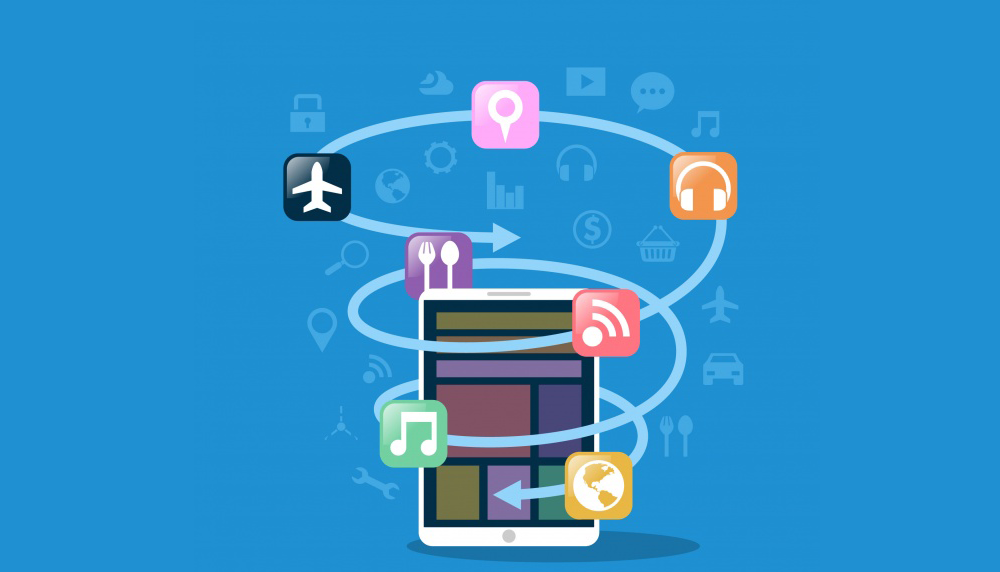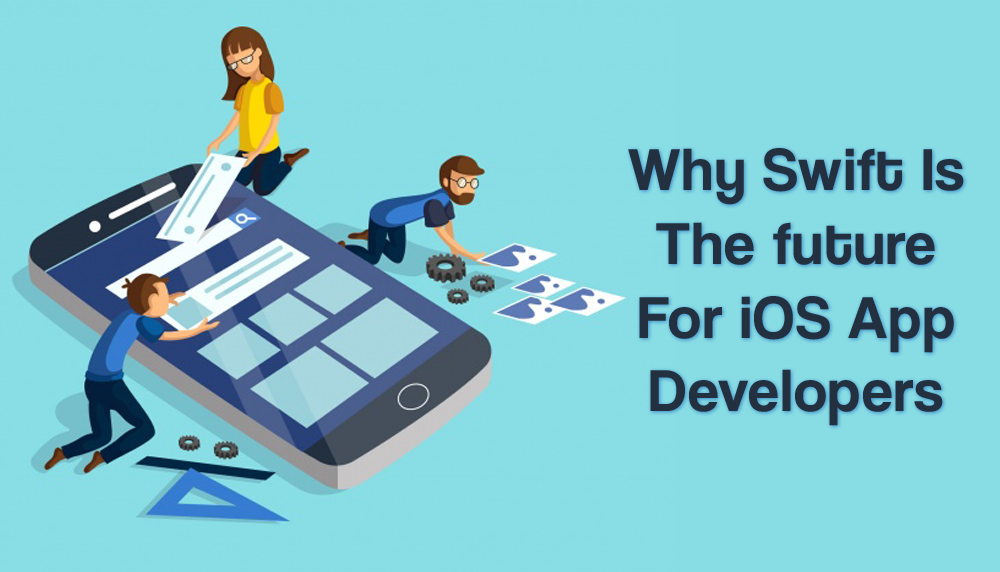Do you know about the Swift programming language? The tech universe stood on its feet when the CEO of Apple, Tim Cook, announced in 2014 that the next big programming language is Swift. And for the next 20 years, iOS app developers will be using Swift code for building apps.
It appears the CEO of the first trillion-dollar tech company in the world was right. Swift programming language is celebrated worldwide, especially in the tech world, and is now set to be the future of iOS app developers. This is evident with the way Swift has captured the most significant portion of the market since it hit the limelight.
Despite the popularity of Swift, some iOS developers are still not utterly convinced. However, by the time you read this article to the end, you will learn all you need to know about the Swift programming language and why Swift is considered the future of iOS app developers.
Without further ado, let’s get to it.
What is Swift?
Swift is a pro-developer programming language that was uniquely developed in order to be friendly for beginners. This high-level language was created for developing complex iOS applications in order to address the diverse needs or requirements of the business. Despite this highly sophisticated language, Swift is considered very close to the English language because it is incredibly easy to code and understand.
This authoritative and instinctive programming language is used for developing an application for all Apple products. Swift was designed and launched in the marketplace in order to replace Objective-C, which has been one of the leading programming languages since 1984.
Swift is extremely easy to maintain since Xcode (IDE) automatically senses all code errors in real-time. The primary benefit of Swift programming language for iOS developers is that it is an open-source language.
And the best part is that iOS developers can use Swift to build applications for iOS and iPhones, iPad, Apple Watch, MacBook, Apple TV, all of which are Apple products.
A Brief History of Swift
In 2010, a Swift development team or group of Apple developers – including Lattner – started to work on the programming language. And Apple launched it in 2014 at the Apple Worldwide Developers Conference.
Many startups and independent developers joined the bandwagon and started experimenting with every one of Swift’s remarkable features such as brief syntax, reduced crashes, etc. The programming language was designed to be clear, easy to understand, but incredibly powerful.
Many developers see Swift as an evolution of its predecessor, Objective-C. Here are some quick facts about Swift that you need to know:

- The first version of Swift i.e., Swift 1.0, underwent a serious upgrade to Swift 2 at the Worldwide Developers Conference 2015.
- The updated version of the programming language, i.e., Swift 2.2, was made available as open-source software. It was made available under the Apache License 2.0 in December 2015, or Linux and Apple’s platforms.
- The third version, i.e., Swift 3.0, also underwent a monumental evolution where its syntax was changed. And in the first quarter of 2018, the fame of this programming language overcame that of Objective-C, its predecessor.
- Swift once again went through a series of changes and became available as Swift 4.0 version. This particular version can update Swift code written in previous versions using the migration functionality built in Xcode.
- Airbnb, Uber, Square, Calm (the meditation app), and almost 500,000+ mobile applications on the App Store are partially written with Swift code.
Swift has grown significantly to become a robust and much-preferred iOS tool or programming language.
The key features of the Swift programming language will be outlined in the next section.
Key Features of Swift Programming Language
Advancement in Syntax
Swift has new syntax features that allow developers to write even more expressive code. The software development kits (SDKs) come with new Objective-C features such as generics explanations and null-ability in order to make code cleaner and safer.
Open Source Programming Language
Swift application development was created by Swift.org, a website that is uniquely devoted to the open-source Swift community. It is composed of a bug tracker, source code, mailing lists as well as standard development lists.
Swift.org also has a Linux version of Swift together with a specific Linux toolset. This toolset contains the LLDB debugger, package manager support, and REPL. You can build mobile apps for OS X, iOS, tvOS, and watchOS. However, it runs only on a Mac.
Put differently, Swift programming language makes application development faster and safer while ensuring programming remains even more enjoyable.
Interactive Playground
Professional developers find the benefits of Swift’s Playground too enormous to pass up. This interactive playground allows coders or lovers of Swift code to test out new algorithm routines or graphics without necessarily building an entire iOS app.
Apple has included inline code execution to playgrounds, and this assists the programmers in writing a large number of codes or algorithms while getting feedback along the way. The feedback loop can ultimately increase the speed at which the code can be written.
Swift’s Playgrounds also contains comments that utilize bullet lists as well as embedded links and images.

Objective-C Interoperability
Objective-C is highly compatible with Swift, and this allows programmers to create projects that involve files written in both languages. You can build up iOS apps using a mixed-language codebase.
You can also employ Swift’s latest features to implement elements of your application’s functionality. You can also add your app’s functionality into your existing Objective-C codebase.
Designed for Safety
Swift is powerful enough to eliminate entire groups of dangerous or unsafe code. For instance, variables are always determined before being used, integers are checked for overflow, and memory is handled accordingly.
A bonus point that Swift has is that Swift objects can never be zero. This means that as soon as you write a bad Swift code, it produces a compiler error. Put differently, problems or issues can be fixed as Swift code is written. This significantly decreases both the time and money you would have spent on fixing those errors.
And finally, Swift triggers a runtime crash in case a NIL optional variable is used. This helps to circumvent the bug or amends it sooner and swiftly entirely in Swift code.
Fast and Powerful
The dropping of legacy C conventions shows that Swift has improved significantly. It employs an exceedingly high-performance LLVM compiler in order to transform Swift code into optimized native codes.
Swift has also made Object categorization substantially faster and quicker than Python. This innovative programming language provides programmers with crucial object-oriented features such as protocols, classes, and generics. These give the Cocoa Touch and Cocoa developers the performance and authority they require.
Binary and Source Compatibility
Developers that use the current version of Swift – i.e., Swift 5 – do not need to modify the Swift code in version 4 in order to make use of the new version of the compiler. But then, you can efficiently utilize the latest compiler as well as relocate at your own pace or speed, efficiently exploiting new Swift 5 highlights by taking one module at a time. Moreover, the latest version of Swift also provides paired similarity for apps.
Great First Language
Swift is built to be the first-ever programming language that offers advanced functionalities and features to open new horizons in the programming universe. This makes it possible for iOS app developers to explore and be more than willing to make a career in this programming language.
Playgrounds and Read-Eval-Print-Loop (REPL)
Swift playgrounds in Xcode as well as playgrounds for iPad, thereby making Swift Application Development very powerful and highly interactive. When you type one line of code, the results will appear instantly.
Dynamic Community
Swift has a large community of developers i.e., iOS app developers, and Apple’s community developers. They work together to ensure and make Swift even more amazing as a programming language.
Playgrounds and Read-Eval-Print-Loop (REPL)Package Manager
Swift Package Manager is an exhaustive single cross-platform tool to create or build, operate, test, and package Swift executables and libraries. This is considered the best way to distribute source code and libraries to the Swift community.
Benefits of Swift Programming Language
So, how can Swift programming language be beneficial to iOS developers? Here are some benefits of using Swift programming language that you may not be aware of:

Open Source
Apple, in 2015, declared Swift as Open Source. This was a welcome move that many developers commended because the programming language can be utilized across a wide variety of platforms and back-end infrastructure to boot. This decision by the behemoth tech organization contributed in no small way to the programming language’s development and adoption. It is one of the numerous reasons why many developers prefer using Swift instead of other programming languages. And today, the Swift programming language is considered one of the top machine languages in the world.
It minimizes development time
Every experienced developer appreciates a programming language that they can easily read without breaking down its complexity. Swift programming language fits this description because it comes with an incredibly clean syntax. This makes the entire process of reading, writing as well as modifying a lot simpler. What is more, Swift requires fewer lines of code to implement an option. And the reason for this is that the programming language eliminates legacy conversions.
Specialists agree that Swift comes quite close to resembling plain English language, making the entire technique more natural. This ends up saving time and money, thereby making the whole app development process much more fun. Swift does not require the addition of semicolons at the end of parenthesis when working with ambiguous statements. The programming language helps to eliminate different types of mistakes that may crop up, especially when using Objective-C.
Built for Safety
The #1 concern that most app developers or anyone looking to create mobile app worries over are safety. When working with Swift, you don’t have to deal with any form of risky code. Swift also employs the latest programming conventions to help app developers maintain the unassailable security on the applications they develop. It is worth noting that this programming language enables users to describe valuables as optional types or value types. This implies that professional developers are at liberty to determine whether the value is null (nil) or exists.
Swift is Low-Maintenance
Developing a mobile application and launching it on the App Store for users to access is not the end of the journey. Updating the mobile application from time to time is a must so that users can enjoy it for as long as possible. To enhance the Objective-C code’s efficiency, developers had no choice but to sustain two code files. But now, it has become a thing of the past, thanks to the advent of Swift since it combines (.h) and (.m) files into one (.swift) file.
Experiment Possibilities
Swift is a programming language that comes with playground mode that a user can take advantage of in order to work on a few application concepts. This makes things much easier since it gives you the real picture of how the application will turn out. This will provide you with enough information to help you decide whether to proceed with the project or float a more practical one. It is also essential to note that Swift programming language shamelessly supports dynamic libraries.
Easier to read
Swift code is remarkably similar to the natural English language in conjunction with other modern popular programming languages. This simplicity makes it much easier for existing developers of Java, C++, Python, and JavaScript to accept Swift programming language into their toolbox.

Conclusion
By now, it is believed you are convinced that Swift programming language is here to stay and is, indeed, the future for iOS app developers. There are lots of resources out there where you can learn all you need to know about Swift, Swift code, and everything that has to do with the programming language.
Take advantage of these resources as soon as you can to get yourself equipped for the future. This is because, believe it or not, Apple and several existing or upcoming (startups) – will utilize Swift for their mobile apps and other uses as well.
